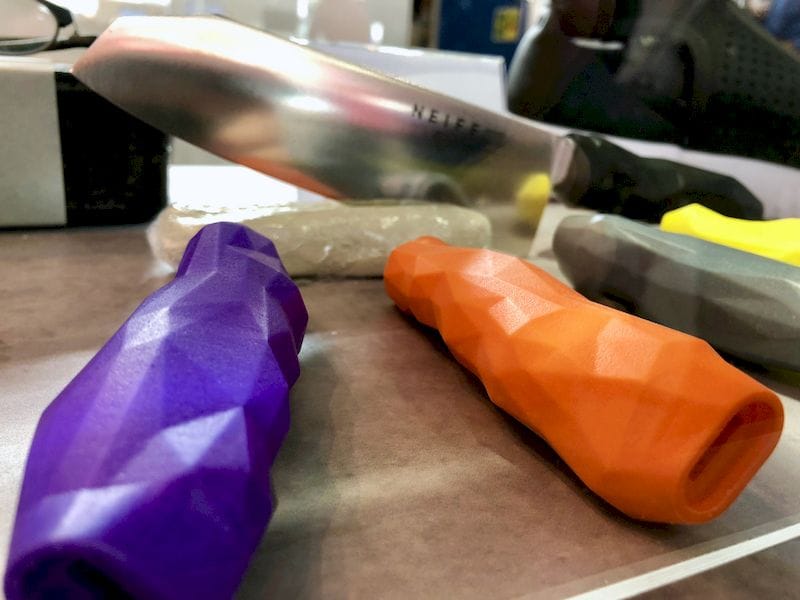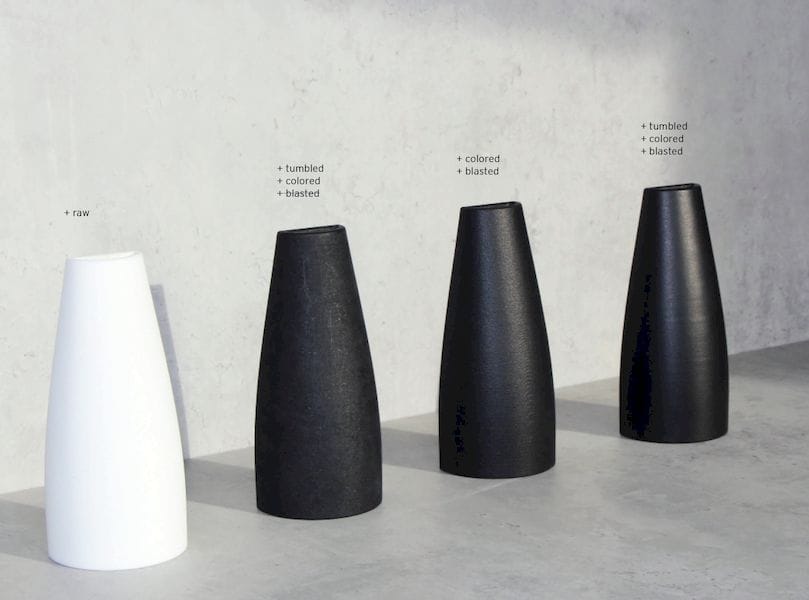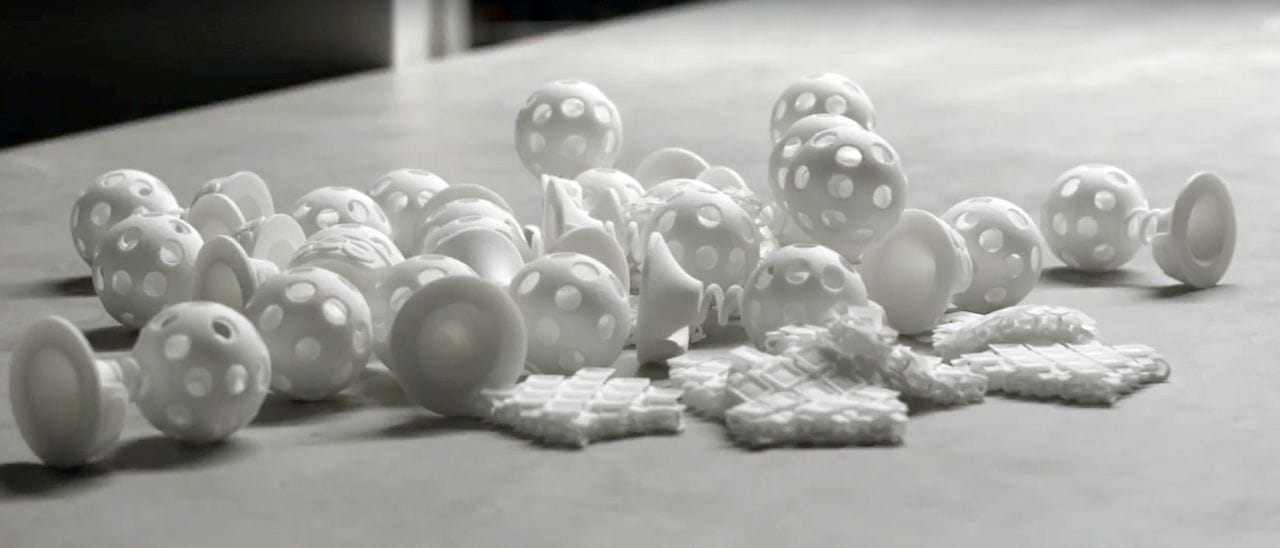
From their name, you’d figure that DyeMansion has something to do with coloration, and you’d be right.
What you may not know is that they’ve branched into additional post processing methods.
DyeMansion’s key proposition is, of course, the ability to provide highly consistent coloration of 3D printed nylon parts. This is actually quite a problem for many companies, because although dyeing nylon prints is as simple as immersing a fresh part in a tub of dye, it is quite difficult to do consistently. You wouldn’t want to have batches of a product have slightly different colors, would you?
Their DM60 system offers a way to do this in a systematic way, producing colored parts with extreme consistency.

But like some other manufacturers of 3D print accessory products, DyeMansion has branched into automating other related post-processing procedures.
They offer two other products that take on the problems of depowdering and surface finishing, the Powershot C and Powershot S.
The Powershot C is a depowdering tool that is used to very quickly remove stray particles from completed SLS prints. The SLS process inevitably leaves dusty loose material on completed prints, which obviously must be removed before further post processing can take place. In some situations, the powder must be completely removed in order to enable the part to be certified for particular industrial uses.
How does it work? The Powershot C includes a large, 135L basket that rotates while a powerful jet of air that flows through the parts while they tumble. The constant reorientation of the parts ensures all angles are eventually covered. DyeMansion says that you can clean 75% of a full load from an EOS P3 in only 10 minutes, which is certainly fast, particularly for a large quantity of parts. The basket is made to be soft to account for fragile parts that will be impacting it during rotations.
That’s not all. DyeMansion also offers the Powershot S, designed to refine the surface finish on SLS 3D printed parts.
The Powershot S is structurally similar to the Powershot C in that it involves a tumbling basket. However, they employ a technique known as “shot peening”, in which a media is blasted at the 3D printed parts. The repeated kinetic impacts impart a very slight deformation that effectively smooths the part.

This approach is more effective than basic tumbling because the media actively hits the parts, rather than only incidentally as done in tumbling. It can also produce a very uniform finish on the entire part, something not usually possible with tumbling. DyeMansion says they can process 75% of a full load from an EOS P3 in only 10 minutes.
While you might not have a use for all of these steps, SLS printer operators certainly must at least require depowdering. Most often this is done manually but in a large shop that could prove quite expensive.
Cleaning, surface finishing and coloration: all the plastic post processing steps are available from DyeMansion.
Via DyeMansion

